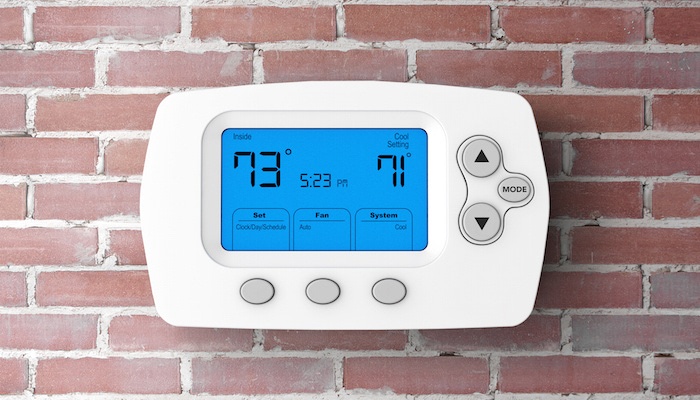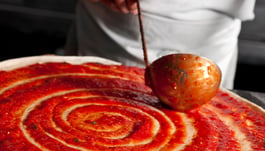 As seasons change, it’s important to consider how fluctuating air temperatures, shifting weather patterns, and dips in humidity negatively impact pizza dough.
As seasons change, it’s important to consider how fluctuating air temperatures, shifting weather patterns, and dips in humidity negatively impact pizza dough.
You can't control the weather, but you can manage the environmental changes that put your pizza dough consistency and crust quality at risk. Implement a few simple best practices during dough preparation:
1. Align water and air temperatures
When mixing your own dough, controlling yeast activation is imperative for best crust flavor and texture. Adding warm water typically initiates yeast fermentation during dough proofing, but if the water and air temperatures are about the same, the dough may rise too quickly. On warmer days, use ice water to slow yeast fermentation. On cooler days, warm water is likely the best choice for your recipe.
2. Adjust dough formulation
Dough absorption is influenced by humidity. To compensate, many pizza makers adjust the amount of water they use and also introduce a complementary amount of oil to enhance crust quality and performance. Since oil viscosity really doesn’t change when added to dough, it acts much like water in that it makes the dough softer and easier to work with in humid weather. The caution, however, is in when to add oil to the dough mix. Use a delayed oil addition method after the flour is hydrated to ensure gluten properly forms, otherwise crust inconsistencies may arise that could ruin your entire batch — which can be a costly lesson in scratch-making dough.
3. Control dough ball proofing
Pre-made dough balls are a great timesaver in the kitchen and make for consistent pie preparation across pizzeria locations. To maximize the benefits, proper pizza dough proofing is key, especially as it relates to temperature. Designate a proofing area that is free from things that could cause temperature fluctuations, such as walk-in cooler doors or direct sunlight.
4. Monitor equipment and prep area temperatures
Carefully consider the extremes you expose your dough to during preparation — from cooler to prep area to oven. Are you aware of the walk-in cooler temps? Do you regularly calibrate the oven? Does the heat or air conditioning need to be adjusted in the kitchen to account for the weather? The attention paid to these often overlooked factors will be reflected in pizza dough and crust integrity.
Seasons change. Weather changes. The only constants you can count on are your dough preparation best practices and the benefits of using pre-made dough balls to limit the amount of time dough is exposed to the elements. Learn more in our quick reference infographic, 5 Ways Pre-Made Dough Balls Streamline Pizzeria Kitchen Operations. Click the button below to access your free copy!






